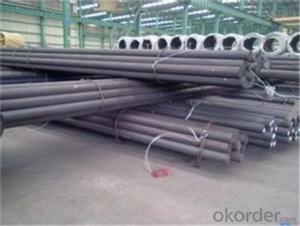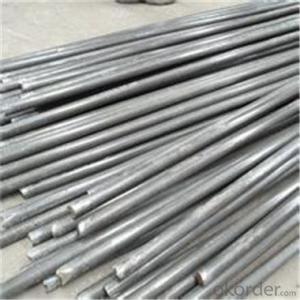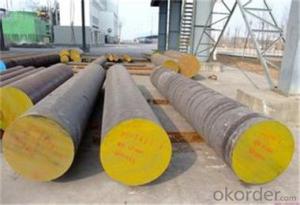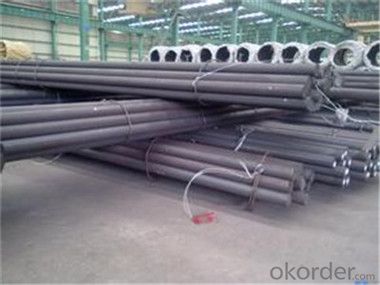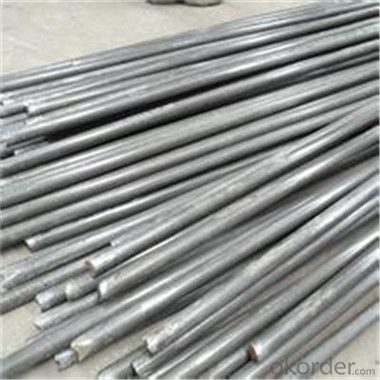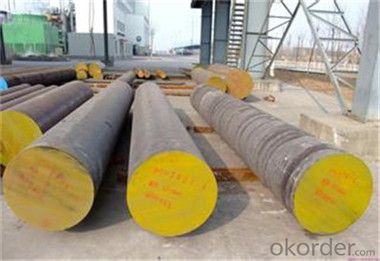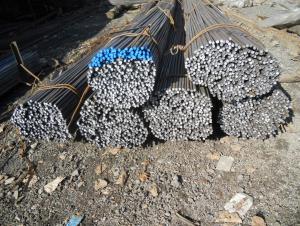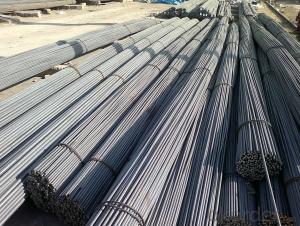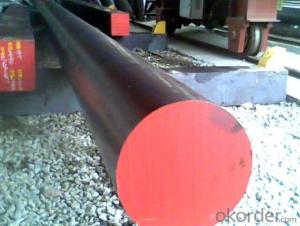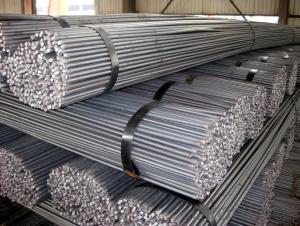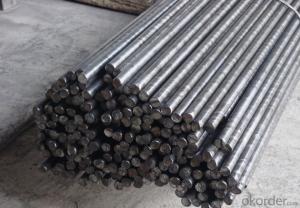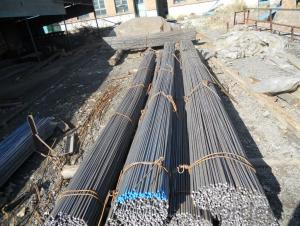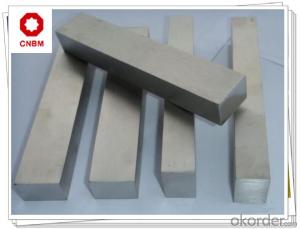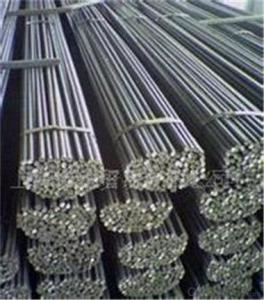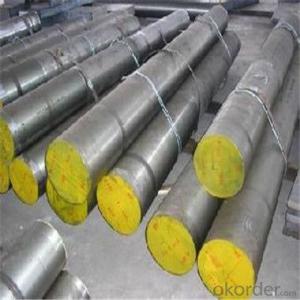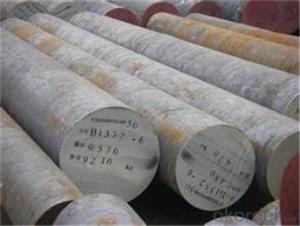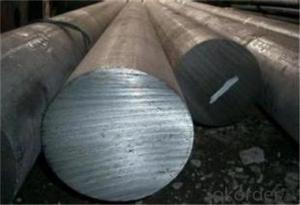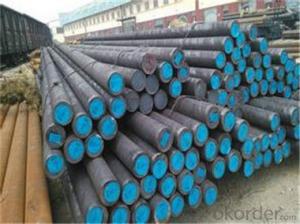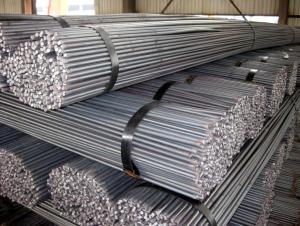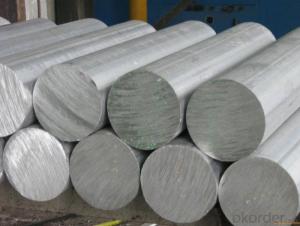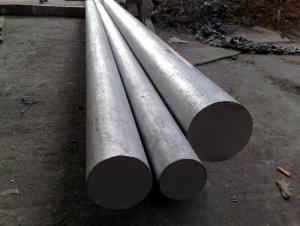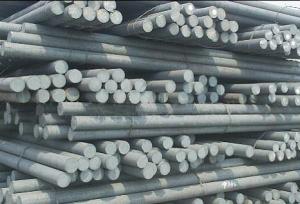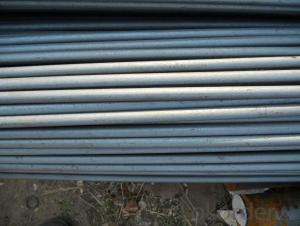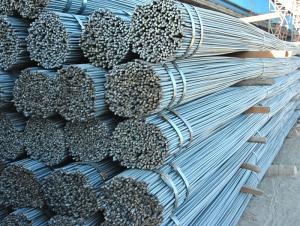Steel Round Bar/High Alloy Round Tool Steel Bar/M2/M25M42/D2
- Loading Port:
- Tianjin
- Payment Terms:
- TT OR LC
- Min Order Qty:
- 44 m.t.
- Supply Capability:
- 2000000 m.t./month
OKorder Service Pledge
OKorder Financial Service
You Might Also Like
Description of steel round bar:
Characteristic:Tungsten-molybdenum high speed steel developed by China,high performance in toughness ,hardness, high temperature hardness.
Festures of steel round bar:
Anneal temperature: 840-860
Relief annealing temperature: 720-760
Hardening temperature: 1210-1230
Specifications of steel round bar:
The highest temperature is 427 degrees Celsius.it has good strength,and high quenching property ,the toughness is good and small deformation during quenching.At high temperature, there are high creep strength and endurance strength.It is used in the manufacture of a higher strength and higher quenching and tempering section of the 35CrMo steel, like big locomotive traction gears, supercharger drive gear, rear axle, the connecting rod and the spring load greatly clip.
| C | Si | Mn | W | Mo | Cr | V | P | S |
| 0.80-0.90 | 0.20-0.45 | 0.15-0.40 | 5.50-6.75 | 4.50-5.50 | 3.80-4.40 | 1.75-2.20 | ≤0.030 | ≤0.030 |
Images of steel round bar:
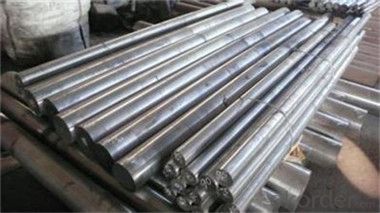
FAQ:
1. What is your package?
Packing situation: standard seaworthy packing or as customer required.
2. How long is the lead time?
Delivery time: 45 days after order confirmed.
- Q: What is the thermal conductivity of a steel round bar?
- The thermal conductivity of a steel round bar can vary depending on the specific type of steel and its composition. Generally, carbon steel has a thermal conductivity ranging from 26 to 48 watts per meter-kelvin (W/m·K), while stainless steel typically has a slightly lower thermal conductivity of 15 to 27 W/m·K. However, these values are approximate and can vary based on factors such as temperature, impurities, and alloying elements. It is important to note that thermal conductivity is a property that describes the material's ability to conduct heat and is usually measured in units of W/m·K.
- Q: How do you calculate the weight of a steel round bar based on its length, diameter, and density?
- To calculate the weight of a steel round bar, you need to use the formula for calculating the volume of a cylinder and then multiply it by the density of the steel. Here are the steps to follow: 1. Determine the radius or diameter of the steel round bar. If you know the diameter, divide it by 2 to get the radius. 2. Calculate the volume of the round bar using the formula V = πr^2h, where V is the volume, π is a mathematical constant approximately equal to 3.14159, r is the radius, and h is the length of the round bar. 3. Convert the diameter, radius, and length to the same unit of measurement if they are in different units. 4. Multiply the volume of the round bar by the density of steel. The density of steel varies depending on the type and grade, but a commonly used value is 7.85 g/cm^3 or 7850 kg/m^3. For example, let's say you have a steel round bar with a diameter of 2 cm, length of 50 cm, and the density of steel is 7850 kg/m^3. 1. Calculate the radius: r = 2 cm / 2 = 1 cm. 2. Calculate the volume: V = π(1 cm)^2 * 50 cm = 50π cm^3. 3. Convert the volume to cubic meters: V = 50π cm^3 * (1 m / 100 cm)^3 = 50π * 10^-6 m^3. 4. Calculate the weight: Weight = volume * density = 50π * 10^-6 m^3 * 7850 kg/m^3 = 0.3925 kg. Therefore, the weight of the steel round bar is approximately 0.3925 kg.
- Q: Are steel round bars suitable for aerospace applications?
- Indeed, aerospace applications can find steel round bars to be suitable. Steel is renowned for its exceptional strength, durability, and resistance against corrosion, making it highly valued in the aerospace sector. Various aerospace components and structures, including landing gear, engine components, and structural supports, can benefit from the utilization of steel round bars. Nevertheless, it is crucial to acknowledge that the precise grade and composition of the steel round bars must adhere to the exacting requirements and standards established by the aerospace industry. Moreover, weight reduction endeavors and the integration of advanced materials like titanium and composites are also taken into account when considering aerospace applications.
- Q: What are the different types of steel round bar surface finishes for corrosion resistance?
- There are several different types of steel round bar surface finishes that are commonly used for corrosion resistance. These finishes provide a protective coating on the surface of the bar, preventing contact with corrosive elements and reducing the risk of rusting or degradation over time. One of the most popular finishes for corrosion resistance is hot-dip galvanizing. This involves immersing the steel round bar in a bath of molten zinc, which forms a layer of zinc coating on the surface. The zinc acts as a sacrificial anode, corroding before the steel does, and providing long-lasting protection against rust and corrosion. Another common surface finish for corrosion resistance is stainless steel. This type of steel contains a minimum of 10.5% chromium, which forms a passive oxide layer on the surface when exposed to oxygen. This layer acts as a barrier, preventing further oxidation and corrosion, making stainless steel round bars highly resistant to rust and other forms of corrosion. Electroplating is another method used to provide corrosion resistance to steel round bars. This process involves immersing the bar in an electrolyte solution and passing an electric current through it. This causes a layer of metal, such as zinc or nickel, to be deposited onto the surface of the bar, providing a protective coating. Powder coating is a popular choice for steel round bars that require both corrosion resistance and aesthetic appeal. This process involves applying a dry powder coating to the surface of the bar and then curing it under heat. The powder melts and forms a hard, durable finish that provides excellent corrosion resistance while also offering a wide range of color options. Additionally, there are specialized coatings available for specific applications, such as epoxy coatings or polymer coatings. These coatings are designed to provide superior resistance to certain corrosive environments, such as exposure to chemicals or high humidity. In summary, the different types of steel round bar surface finishes for corrosion resistance include hot-dip galvanizing, stainless steel, electroplating, powder coating, and specialized coatings. Each of these finishes offers varying levels of protection against rust and corrosion, and the choice of finish depends on factors such as the specific application, environmental conditions, and desired aesthetics.
- Q: Can steel round bars be used in high-temperature applications?
- Yes, steel round bars can be used in high-temperature applications as they have excellent thermal resistance and can withstand elevated temperatures without losing their structural integrity.
- Q: What is the difference between a hot-rolled and a peeled steel round bar?
- A hot-rolled steel round bar is produced by heating a billet or ingot until it reaches a temperature where the material can be easily shaped or formed. Once heated, the steel is rolled through a series of rollers to achieve the desired shape and size. The process of hot rolling creates a bar with a rough surface texture and a slightly rounded edge. On the other hand, a peeled steel round bar undergoes a different manufacturing process. It is first hot-rolled to achieve the desired shape and size, similar to the hot-rolled bar. However, after the initial hot rolling, the peeled bar is subjected to a mechanical peeling process. This involves removing the outer layer of the bar to achieve a smooth, shiny surface finish. The peeling process also helps to improve the dimensional accuracy and surface quality of the bar. In summary, the main difference between a hot-rolled and a peeled steel round bar lies in the surface finish and dimensional accuracy. While a hot-rolled bar has a rough surface texture and a slightly rounded edge, a peeled bar has a smooth, shiny surface finish with improved dimensional accuracy. The peeling process enhances the overall quality and appearance of the steel round bar, making it more suitable for applications where aesthetics or precision is important.
- Q: What are the different alloying elements used in steel round bars?
- The different alloying elements commonly used in steel round bars include carbon, manganese, silicon, sulfur, phosphorus, chromium, nickel, molybdenum, vanadium, and sometimes tungsten. These elements are added in varying quantities to enhance specific properties of the steel, such as strength, corrosion resistance, and heat resistance.
- Q: How do steel round bars perform under fatigue loading?
- High-quality steel round bars generally exhibit excellent performance when subjected to fatigue loading. Fatigue loading refers to the repetitive application of stress or strain on a material, which can eventually cause failure. The outstanding fatigue strength of steel round bars is well-known. This refers to their ability to withstand cyclic loading without developing cracks or failures. This exceptional fatigue strength can be attributed to the inherent properties of steel, including its high strength, ductility, and toughness. During fatigue loading, steel round bars undergo cyclic stress, resulting in alternating tension and compression. Nonetheless, steel possesses a relatively high endurance limit, also known as the fatigue strength coefficient. This limit determines the maximum stress level that the material can endure without failure, even under cyclic loading. Moreover, steel round bars demonstrate commendable resistance to fatigue crack propagation. In the event that a crack does initiate due to cyclic loading, it is less likely to propagate or grow rapidly in comparison to other materials. This can be attributed to the material's ability to absorb energy and redistribute stress, thus impeding crack growth and preventing failure. Nevertheless, it is essential to consider that the performance of steel round bars under fatigue loading can be influenced by various factors. These factors include the specific type and grade of steel utilized, the manufacturing process, surface conditions, and the applied stress or strain levels. Therefore, it is crucial to adhere to industry standards and guidelines when designing and implementing steel round bars to ensure optimal performance and safety under fatigue loading.
- Q: How are steel round bars used in the oil and gas industry?
- Steel round bars are commonly used in the oil and gas industry for various applications. They are utilized in the construction of drilling equipment, such as drill bits and drill collars, as well as in the manufacturing of valves, pipelines, and other components that need to withstand high pressure and corrosion. The strength and durability of steel round bars make them ideal for withstanding the harsh operating conditions encountered in the oil and gas sector.
- Q: What is the maximum phosphorus content allowed for steel round bars?
- The maximum phosphorus content allowed for steel round bars typically ranges from 0.04% to 0.10%.
Send your message to us
Steel Round Bar/High Alloy Round Tool Steel Bar/M2/M25M42/D2
- Loading Port:
- Tianjin
- Payment Terms:
- TT OR LC
- Min Order Qty:
- 44 m.t.
- Supply Capability:
- 2000000 m.t./month
OKorder Service Pledge
OKorder Financial Service
Similar products
Hot products
Hot Searches
